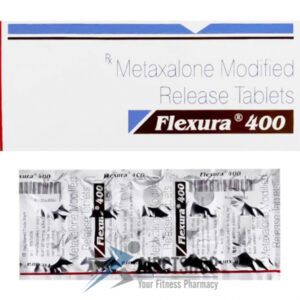Diclofenac Information
Pronunciation
(dye KLOE fen ak)
What is this drug used for?
– It is used to ease pain.
– It is used to treat some types of arthritis.
– It is used to ease painful period (menstrual) cycles.
– It is used to treat migraine headaches.
– It may be given to you for other reasons. Talk with the doctor.
Frequently reported side effects of this drug
– Nausea
– Constipation
– Heartburn
– Abdominal pain
– Vomiting
– Diarrhea
– Passing gas
– Fatigue
– Common cold symptoms
– Injection site pain
– Sweating a lot
Other side effects of this drug: Talk with your doctor right away if you have any of these signs of:
– Severe cerebrovascular disease like change in strength on one side is greater than the other, difficulty speaking or thinking, change in balance, or vision changes.
– Abdominal ulcers like severe abdominal or back pain; black, tarry, or bloody stools; vomiting blood or vomit that looks like coffee grounds; or weight gain or abnormal swelling.
– High potassium like abnormal heartbeat, confusion, dizziness, passing out, weakness, shortness of breath, or numbness or tingling feeling.
– Bleeding like vomiting blood or vomit that looks like coffee grounds; coughing up blood; blood in the urine; black, red, or tarry stools; bleeding from the gums; abnormal vaginal bleeding; bruises without a reason or that get bigger; or any severe or persistent bleeding.
– Kidney problems like unable to pass urine, blood in the urine, change in amount of urine passed, or weight gain.
– Shortness of breath
– Severe dizziness
– Passing out
– Excessive weight gain
– Swelling of arm or leg
– Chest pain
– Fast heartbeat
– Severe headache
– Vision changes
– Severe loss of strength and energy
– Painful urination
– Blood in the urine
– Liver problems like dark urine, fatigue, lack of appetite, nausea, abdominal pain, light-colored stools, vomiting, or yellow skin.
– Stevens-Johnson syndrome/toxic epidermal necrolysis like red, swollen, blistered, or peeling skin (with or without fever); red or irritated eyes; or sores in mouth, throat, nose, or eyes.
– Signs of a significant reaction like wheezing; chest tightness; fever; itching; bad cough; blue skin color; seizures; or swelling of face, lips, tongue, or throat.
Medication Safety Issues
Sound-alike/look-alike issues:
Diclofenac may be confused with Diflucan
Cataflam may be confused with Catapres
Voltaren may be confused with traMADol, Ultram, Verelan
Product Availability (US)
Dyloject (diclofenac injection) has been discontinued in the US for more than 1 year.
Storage/Stability
Capsule, tablet: Store at 20?C to 25?C (68?F to 77?F); excursions permitted to 15?C to 30?C (59?F to 86?F). Protect from moisture.
Injection: Store at 20?C to 25?C (68?F to 77?F). Do not freeze. Protect from light.
Powder for oral solution: Store at 25?C (77?F); excursions permitted to 15?C to 30?C (59?F to 86?F).
Suppository [Canadian product]: Store at 15?C to 30?C (59?F to 86?F); protect from heat.
Adverse Reactions
Injection:?Frequency not always defined.
Cardiovascular: Edema (?10%), cerebrovascular accident, hypertension, myocardial infarction, significant cardiovascular event
Central nervous system: Headache (?10%), dizziness (8%)
Dermatologic: Pruritus (?10%), skin rash (?10%), exfoliative dermatitis, Stevens-Johnson syndrome, toxic epidermal necrolysis
Endocrine & metabolic: Fluid retention
Gastrointestinal: Constipation (13%), abdominal pain (?10%), diarrhea (?10%), dyspepsia (?10%), esophageal perforation (?10%), flatulence (?10%), gastrointestinal ulcer (?10%; including gastric/duodenal), heartburn (?10%), intestinal perforation (?10%), nausea (?10%), vomiting (?10%)
Hematologic & oncologic: Anemia (?10%), hemorrhage (?10%), prolonged bleeding time (?10%)
Hepatic: Increased liver enzymes (?10%), increased serum transaminases (15%), increased serum ALT (?4%; >8X ULN: ?1%), increased serum AST (2% to ?4%; >8X ULN: ?1%)
Hypersensitivity: Anaphylactoid reaction
Local: Infusion site reaction (10%), extravasation (3%)
Otic: Tinnitus (?10%)
Renal: Renal insufficiency (?10%)
Miscellaneous: Wound healing impairment (8%), gastrointestinal inflammation
<1%, postmarketing, and/or case reports : Abnormal Dreams, agranulocytosis, alopecia, anaphylaxis, angioedema, anxiety, aplastic anemia, asthma, auditory impairment, blurred vision, cardiac arrhythmia, cardiac failure, change in appetite, colitis, coma, confusion, conjunctivitis, convulsions, cystitis, depression, diaphoresis, drowsiness, dyspnea, dysuria, ecchymoses, eosinophilia, eructation, erythema multiforme, esophagitis, exfoliative dermatitis, fever, fulminant hepatitis, gastritis, gastrointestinal hemorrhage, glossitis, hallucination, hematemesis, hematuria, hemolytic anemia, hepatic failure, hepatic necrosis, hepatitis, hepatotoxicity, hyperglycemia, hypertension, hypotension, infection, insomnia, interstitial nephritis, jaundice, leukopenia, lymphadenopathy, malaise, melena, meningitis, nervousness, oliguria, palpitations, pancreatitis, pancytopenia, paresthesia, pneumonia, polyuria, proteinuria, purpura, rectal hemorrhage, renal failure, respiratory depression, sepsis, skin photosensitivity, stomatitis, syncope, tachycardia, thrombocytopenia, toxic epidermal necrolysis, tremor, urticaria, vasculitis, vertigo, weakness, weight changes
Oral:?Frequency not always defined.
>10%:
Cardiovascular: Edema (33%)
Hepatic: Increased serum transaminases (?3 x ULN; 15%)
1% to 10%:
Cardiovascular: Hypertension (2% to 3%)
Central nervous system: Headache (4% to 8%), procedural pain (3%), dizziness (2%), falling (2%)
Dermatologic: Pruritus (7%), skin rash
Gastrointestinal: Constipation (5% to 8%), nausea (6% to 7%), diarrhea (6%), GI adverse effects (gastric ulcer, hemorrhage, and perforation; ?4%, risk increases with therapy duration), abdominal pain (2% to 3%), vomiting (3%), dyspepsia (2% to 3%), flatulence (2% to 3%), heartburn, abdominal discomfort (2%), duodenal ulcer
Genitourinary: Urinary tract infection (7%)
Hematologic & oncologic: Bruise (3%), anemia, prolonged bleeding time
Hepatic: Increased serum ALT (>3 x ULN: ?4%; >8 x ULN: ?1%), increased serum AST (>3 x ULN; ?4%; >8 x ULN: ?1%)
Infection: Influenza (3%)
Neuromuscular & skeletal: Osteoarthritis (5%), arthralgia (3%), back pain (3%), limb pain (3%)
Renal: Renal function abnormality
Otic: Tinnitus
Renal: Increased serum creatinine (2%), renal function abnormality
Respiratory: Upper respiratory tract infection (8%), nasopharyngitis (6%), sinusitis (3% to 5%), cough (4%), bronchitis (3%)
<1%, postmarketing, and/or case reports: Abnormal dreams, agranulocytosis, alopecia, anaphylactoid reaction, anaphylaxis, angioedema, anxiety, aplastic anemia, aseptic meningitis, asthma, auditory impairment, azotemia (Gurwitz, 1990), blurred vision, cardiac arrhythmia, cardiac failure, cerebrovascular accident, change in appetite, chest pain, colitis, coma, confusion, conjunctivitis, cystitis, decreased hemoglobin (Goldstein, 2011), depression, diaphoresis, diplopia, disorientation, drowsiness, dyspnea, dysuria, ecchymoses, eosinophilia, eructation, erythema multiforme, esophageal ulcer, esophagitis, exfoliative dermatitis, fever, fluid retention, fulminant hepatitis, gastritis, glossitis, hallucination, hearing loss, hematemesis, hematuria, hemolytic anemia, hepatic failure, hepatic necrosis, hepatitis, hepatotoxicity, hyperglycemia, hypotension, infection, insomnia, interstitial nephritis, intestinal perforation, jaundice, leukopenia, lymphadenopathy, malaise, melena, memory impairment, meningitis, myocardial infarction, nephrotic syndrome, nervousness, oliguria, palpitations, pancreatitis, pancytopenia, paresthesia, peptic ulcer, pneumonia, polyuria, proteinuria, psychotic reaction, purpura, rectal hemorrhage, renal failure, renal papillary necrosis, respiratory depression, seizure, sepsis, skin photosensitivity, Stevens-Johnson syndrome, stomatitis, syncope, tachycardia, taste disorder, thrombocytopenia, toxic epidermal necrolysis, tremor, urticaria, vasculitis, vertigo, weakness, weight changes, xerostomia









Reviews
There are no reviews yet.